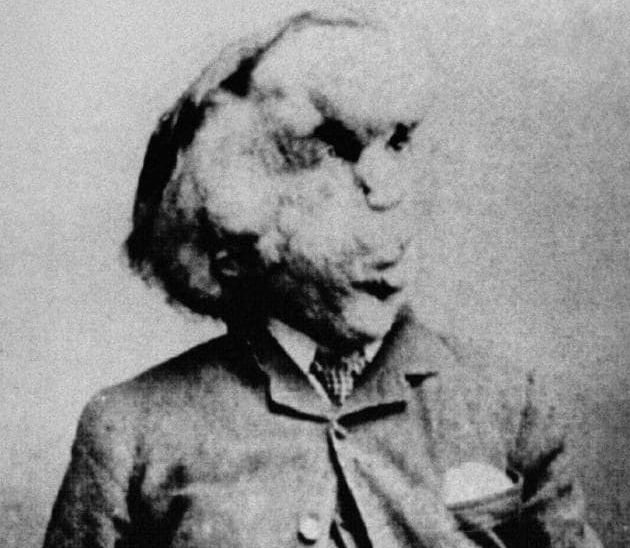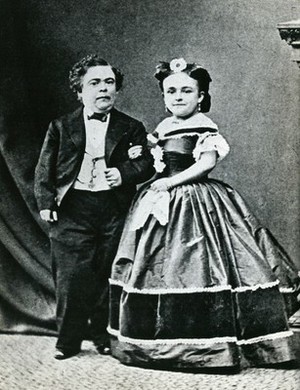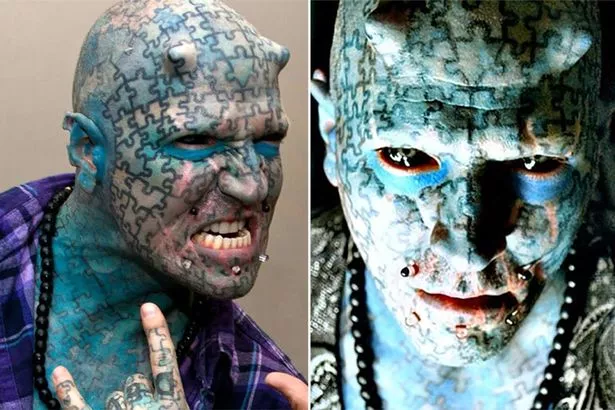Introduction
Sideshows and freak shows, also known as circus freaks, have long been a part of the cultural fabric of entertainment. These unique exhibitions have captivated audiences with their displays of human oddities, remarkable talents, and extraordinary physical conditions. From their origins in the 16th century to their evolution in modern times, freak shows have undergone significant transformations. This article explores the history, types, and famous figures of freak shows, shedding light on their economic aspects and their place in contemporary entertainment.
Origins and Evolution
The concept of freak shows dates back to the 16th century, where individuals with unusual physical traits were showcased at fairs and carnivals. These early exhibitions were often rooted in curiosity and wonder, as people marveled at the diversity of human forms. By the 19th century, freak shows had become a staple of traveling circuses and sideshows, reaching their peak during the Victorian era.
P.T. Barnum, a pioneer of American entertainment, played a crucial role in popularizing freak shows. In the mid-19th century, Barnum’s American Museum in New York City featured an array of human curiosities, including conjoined twins, bearded ladies, and individuals with dwarfism or gigantism. Barnum’s shows combined sensationalism with a veneer of scientific inquiry, attracting massive crowds and solidifying the place of freak shows in popular culture.
Types of Freak Shows
Freak shows can be categorized into various types based on the nature of the exhibits:
- Human Oddities: These included individuals with congenital disabilities or unique physical traits. Examples include the bearded lady, the skeleton man, and conjoined twins.
- Exotic Performers: Individuals from distant lands, often portrayed with a sense of mystique and otherness. This category includes people with unusual body modifications or those from isolated tribes.
- Living Wonders: People with extraordinary abilities or medical conditions, such as sword swallowers, fire eaters, and contortionists.
- Fabricated Freaks: Occasionally, performers would use makeup, costumes, or props to create the illusion of being a “freak,” such as the “Ecuadorian headshrinker” or the “wolf man.”
Famous Circus Freaks
Joseph Merrick (1862-1890)

Known as the “Elephant Man,” Joseph Merrick was one of the most famous figures in freak show history. Merrick suffered from severe deformities caused by a combination of neurofibromatosis and Proteus syndrome. He was exhibited in the United Kingdom and gained widespread attention for his unusual appearance. His story inspired numerous books, plays, and films.
Chang and Eng Bunker (1811-1874)

Chang and Eng Bunker, the original “Siamese Twins,” were conjoined twins born in Siam (now Thailand). They were connected at the sternum and shared a fused liver. The twins toured extensively in the United States and Europe, eventually settling in North Carolina, where they married and fathered 21 children between them.
Tom Thumb (1838-1883)

Charles Stratton, known as General Tom Thumb, was a dwarf who stood just over 3 feet tall. Discovered by P.T. Barnum at the age of four, Tom Thumb became an international sensation, performing for royalty and in major cities worldwide. He earned substantial wealth and fame during his career.
Julia Pastrana (1834-1860)

Julia Pastrana, often called the “Bear Woman” or “Ape Woman,” had hypertrichosis, causing excessive hair growth on her body and face. She also had a protruding jaw and thick lips. Pastrana performed in Europe and North America, drawing large crowds. Despite her physical appearance, she was known for her graceful dancing and singing.
Economic Aspects
In the heyday of freak shows, performers could earn significant incomes, especially those managed by prominent figures like P.T. Barnum. For instance, Tom Thumb reportedly earned over $150,000, a substantial sum in the 19th century. Payment varied widely based on the individual’s uniqueness, popularity, and the show’s success. Some performers were paid a salary, while others worked on a commission basis, receiving a percentage of the ticket sales.
While some performers achieved financial success, others were exploited and received minimal compensation. The ethics of freak shows have been widely debated, with concerns about exploitation, consent, and the dignity of those exhibited.
Modern-Day Freak Shows
Contemporary freak shows and sideshows continue to exist, though they have evolved significantly. Modern audiences are drawn to these exhibitions not only for their curiosity but also for their appreciation of human diversity and unique talents. Today’s sideshows often emphasize respect and consent, focusing on the performers’ skills rather than solely on their physical appearance.
Famous Modern Performers
The Lizardman (Erik Sprague)
Erik Sprague, known as The Lizardman, has undergone extensive body modifications to resemble a lizard, including full-body tattooing, sharpened teeth, and subdermal implants. He performs in sideshows, showcasing his body modifications and performing acts like sword swallowing and fire eating.
The Enigma (Paul Lawrence)

The Enigma, also known as Paul Lawrence, is a performance artist known for his blue puzzle piece tattoos covering his entire body. He has performed in various sideshows and on television, combining his unique appearance with feats of endurance and performance art.
Morgue (Jeremy Smith)
Jeremy Smith, known as Morgue, is a modern-day sideshow performer specializing in shock and pain endurance acts. His performances include sword swallowing, contortion, and acts involving needles and hooks.
Here is a list of the top 20 Notable Sideshows and Circus Freaks Throughout History:
- Schlitzie (Schlitzie Surtees)
- Known for: Microcephaly and his performances in sideshows and the film “Freaks” (1932).
- Johnny Eck
- Known for: Being the “Half-Boy” due to sacral agenesis, a condition that left him with underdeveloped lower limbs. He performed acrobatics and magic.
- Ella Harper
- Known for: Known as the “Camel Girl” due to a congenital knee dislocation that allowed her to walk on all fours.
- Grace McDaniels
- Known for: Known as the “Mule-Faced Woman” due to a severe facial deformity caused by Sturge-Weber syndrome.
- Prince Randian
- Known for: Being the “Living Torso,” he had no limbs and performed feats such as rolling cigarettes with his lips.
- Millie and Christine McCoy
- Known for: Conjoined twins known as the “Two-Headed Nightingale,” famous for their singing and dancing performances.
- Isaac W. Sprague
- Known for: Known as the “Living Skeleton” due to extreme thinness caused by an undiagnosed condition.
- Francesco Lentini
- Known for: Known as the “Three-Legged Man” due to having an extra limb and partially developed twin.
- Myrtle Corbin
- Known for: Known as the “Four-Legged Girl” due to a condition called dipygus, resulting in two sets of legs.
- Fannie Mills
- Known for: Known as the “Ohio Big Foot Girl” due to Milroy disease, which caused severe swelling in her feet.
- Josephine Clofullia
- Known for: Known as the “Bearded Lady of Geneva” for her full beard, which she began growing at age 8.
- Jean-Jacques Libbera and Jacques Libbera
- Known for: Conjoined twins known as the “Double Boys,” performing in European sideshows.
- Daisy and Violet Hilton
- Known for: Conjoined twins known for their vaudeville performances and appearance in the film “Freaks.”
- Frank Lentini
- Known for: Known as the “Three-Legged Football Player” due to his third leg and functional foot.
- Annie Jones
- Known for: Known as the “Bearded Lady” and one of P.T. Barnum’s most famous attractions.
- Pip and Flip (Jenny Lee and Elvira Snow)
- Known for: Twins with microcephaly, they were billed as the “Pinheads.”
- Ella Ewing
- Known for: Known as the “Missouri Giantess” due to her exceptional height of 8 feet 4 inches.
- Charles Tripp
- Known for: Known as the “Armless Wonder,” he performed using his feet for various tasks, including painting and playing musical instruments.
- Betty Lou Williams
- Known for: Known as the “Stork Woman” due to her tall, slender frame and elongated limbs caused by Marfan syndrome.
- Zip the Pinhead (William Henry Johnson)
- Known for: Known for his tapered head and billed as a “missing link” in sideshows.
These performers, with their unique physical attributes and talents, contributed to the rich history of circus and sideshow entertainment, captivating audiences around the world
Conclusion
The history of sideshows and freak shows is a testament to humanity’s enduring fascination with the unusual and extraordinary. While these exhibitions have evolved over time, they continue to captivate audiences and celebrate human diversity. As society progresses, modern sideshows strive to balance curiosity with respect, ensuring that performers are celebrated for their talents and individuality. Whether in the past or present, freak shows remain a unique and intriguing aspect of entertainment history.
